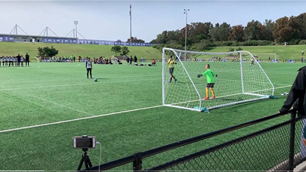How do we work the game towards a sounder financial future?
This is a topic that has been debated to death on these very forums – the fact that we’re reliant on the good will of billionaires to keep individual teams afloat, and the stark reality that those franchises just don’t make any money. Some people feel that things will naturally right themselves. Others pin every single last hope on a TV deal that they think will be ‘just massive’. Then there are those who say the current model is broken, but more often then not there are precious few realistic suggestions to fix it.
Yet a recent discussion with a fellow Glory supporter, one who isn’t a great fan of current owner Tony Sage, got me thinking about ways of altering and improving the franchise model. I’ll start with their own novel suggestion of attempting to turn the franchise model into a more club-orientated approach.
Football, Inc.
Right now, Football Federation Australia owns the rights to all top-level football in Australia. When they want a new side in the league, they grant a franchise licence – not a team – to an investor, which gives this individual or group the right to run an A-League franchise for a set number of years in a location that has the governing body’s blessing. They do not own this football team; merely the right to hold the licence a set number of years and take all the associated costs that come with it. The fans that support this club own even less. They get no voting rights in the election of a board; they have no control over or input into administrative decisions, and as members they do not even get any real extra benefits over Joe Public apart from a slightly discounted ticket and early access to finals seats (assuming your team even makes it). For all intents and purposes an A-League membership should be called a season ticket, because with few exceptions A-League club members do not have any rights beyond this. If some arrogant, rotund billionaire takes over your club and appoints idiots to the board, you basically have no way of protesting this other than not turning up to games – hardly a winning option for a fan who likes to support their players, though perhaps not their administration.
Imagine then that the franchise system worked differently. Instead of granting a new licence to an investor, the FFA sets up a publicly listed not-for-profit company who holds the franchise licence. Importantly, the company holds the franchise’s intellectual property rights as well, meaning that decisions on marketing, logo use, sponsorship, etc can be made independent of the FFA. Yes, that means clubs could actually own their own website, too. From here, shares in the company can be purchased both by millionaire investors looking to own a football club and people like you or I just wanting a piece of our local team. When enough investors are found, a board is formed representing the body of investors, which would also include at least one fan-elected representative and an individual from the FFA (preferably the A-League, but that’s a different issue…) Now you have a situation where you find at least some sense of fan/community ownership of a football club; and one in which investors can voice displeasure or offer opinions at AGMs, directly to the board in control of their team.
This would make it harder for clubs to ignore the demands of their end customers, especially if there was a FFA representative there to raise eyebrows at any passing of the buck to the national body. It also puts the onus on fans to back up claims about their dedication to the cause – too often we see supporters bitching and whining about the club not listening to them, yet when that club offers a rare opportunity to give feedback, people seem to go missing. You want more involvement with your local side? Put your money where your mouth is – we’ll soon see if you’re actually far too young and angry to purchase shares, or far too busy with ‘er, well actually I need to paint the shed…’ type excuses.
Granted, this is a very high-level solution. But it does at the very least offer an option for fans who do want to put their money where their mouth is and invest in a slice of their local club. It adds an extra layer of accountability and also makes investing an attractive option to a wider audience. I don’t expect the public ownership portion to make millions for the club, but in the current A-League environment every little bit helps – and hey, perhaps inventive ideas like ‘sponsor a youth player’ could be used to pay for some contracts. Finally, whilst it doesn’t remove the need for cashed-up investors to come along and plough money into a football club, it does at least remove the image of A-League franchises being nothing more than millionaire’s playthings.
Save To Build
Some time ago, I mentioned the need for the FFA to construct a ‘future fund’ for stadium improvements and investment. With the ongoing saga around what would make a suitable home for Perth Glory, not to mention the completion of the spectacular football ground that is AAMI Park, it is no less relevant now. I am not naïve enough to think that an organisation like the FFA could or should stump up the tens of millions required to build a stadium from scratch in an Australian city. But when you have the ridiculous situation of Perth Glory having to hire a video screen, as mandated by FFA/Foxtel requirements, simply because nib Stadium doesn’t contain one normally, you would think a fund managed by the governing body could help out with a modest donation to reduce the running costs of one of its member clubs.
The FFA could also do with making friends (be it officially or shadily – hey, they need some practice either way) with state governments around the country. Whilst the federal government has shown a willingness to play ball by giving a cash injection for the world cup bid and the running of the game across the nation, state bodies have been less forthcoming – especially in my native Western Australia. Over here we have lost track of the amount of promises broken by governments on both sides of politics, claiming to be on the side of the round ball game only to be distracted once more by the shiny lights of the WAFC. Even now we have a brand new stadium on the agenda – a 60,000 seat behemoth proposed for Burswood that will be the new replacement for Subiaco oval. Fair enough, we have two AFL teams with big memberships. Yet will we be seeing a new rectangular arena in this town? Of course not – hell, the $90 million upgrade of nib Stadium won’t even make it an all-covered ground, and according to Glory owner Tony Sage it will do little to reduce the franchise’s weekly running costs. That being said, while the national body could do more to help owners, cost savings often lie within the reach of people like Sage, too.
Fans Are Your Cheapest Human Resource
Isn’t it amusing that football fans, on their own time, often produce brilliant satirical images using photoshop that look a million times better than what banners and advertisements have been put together on the club website? Or how some fan-made shirts and scarves are actually better looking, and cheaper, than the official merchandise that the club produces? I’ve often wondered why A-League clubs like Perth Glory, in all their razor gang cost-cutting hysteria, don’t reach out to their supporter base and ask for some help.
This season, we’ve seen some encouraging signs of this in WA. The club has been running a fan blog on their website; people contribute their experiences about the last game or relay the tales of their road trip (though possibly not this) and a variety of people have taken it upon themselves to do some writing for it. Sure, it looks very closely vetted and no, there’s never anything bad to say about anyone, but it is after all a club website – and I don’t think there’s a football club in the world that has a bad thing to say about themselves on their own site. But we need more of this sort of thing – after all, employees cost money but fans are free. What’s more, fans are made up of computer scientists, journalists, builders, fashion designers, artists – you name it, one of us probably does it.
People volunteer to do stadium work on matchday – they should also have the opportunity to:
- Cut promos for the league on YouTube, without fear of a lawsuit.
- Write articles for club and FFA websites.
- Design sports and casual wear for the club’s merchandise.
- Write signs, design posters, and other advertising.
- Be able to do anything at all that they are skilled at for a club and sport that they are passionate about, without the fear of instantaneous rejection from their club or governing body.
The FFA and clubs should be open to fans wanting to improve their club, their sport – Perth Glory haven’t been in the past, but we’re gradually getting there… Maybe. I hope. In any case, we have a sea of passionate people with a variety of skills out there; and within reason that skill can be harnessed with very little cost. There should be a part on every A-League website that says: “WANT TO HELP US? CLICK HERE”. It should be obvious to people that the opportunity is there to volunteer and be welcomed with open arms, not ridicule, ignorance or silence.
These are just three ideas, three examples, of how things could change for the better. Some are very high-level; others can be implemented right away. The important thing to realise is that this loss-making league does not need to be saved solely by STUPENDOUSLY LARGE TV DEAL. Such a deal may not eventuate – what then?
Clubs need to reduce costs; they need to look at spending on facilities, they need to hand out contracts in a smarter fashion, and they need to reduce administrative overhead. Putting the A-League on an even keel is as much about making small cost savings as it is about chasing increasing revenue. These are but a few examples – I’m sure amongst you readers that there are many more to come.
Related Articles

Fresh talent flock to ambitious A-League outfit's pro pathway

Why A-League 20/21 is crucial for Olyroos’ medal hopes













